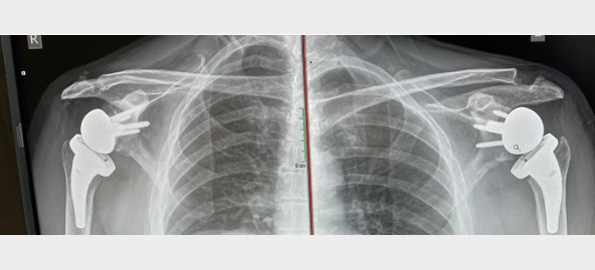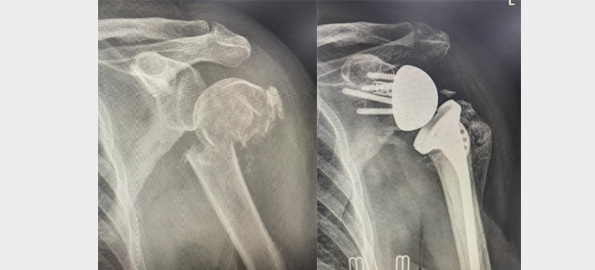Regaining Shoulder Function: Understanding Shoulder Replacement Surgery
An Overview
Shoulder pain significantly impacting your daily life?
While non-surgical options might be explored first, shoulder replacement surgery can offer significant relief and improved function when needed.
What is Shoulder Replacement Surgery?
This surgery, also called shoulder arthroplasty, replaces the damaged shoulder joint with artificial implants made of metal and plastic. It’s considered when pain from conditions like arthritis, fractures, or rotator cuff injuries becomes severe and hinders daily activities.
Understanding Your Shoulder Joint:
The shoulder is a ball-and-socket joint, allowing for a wide range of motion. Damage to the cartilage, bones, or tendons within this joint can cause significant pain, weakness, and stiffness.
When is Shoulder Replacement Necessary?
Several conditions can necessitate shoulder replacement:
- Osteoarthritis: “Wear-and-tear” arthritis damages the cartilage, hindering smooth joint movement.
- Rotator Cuff Injuries: Tears in the rotator cuff, a group of muscles and tendons, can damage the joint.
- Fractures: Severe fractures in the upper arm bone may require replacement.
- Rheumatoid Arthritis: This autoimmune disease can damage the joint’s cartilage and bone.
- Osteonecrosis: Reduced blood flow to the bone can cause it to collapse, requiring replacement.
Types of Replacement Surgery
There are four main types of shoulder replacement, each suited to specific conditions:
- Hemiarthroplasty: Replaces only the ball of the joint, leaving the socket intact.
- Resurfacing Hemiarthroplasty: Caps the humeral head with a prosthesis, preserving more bone.
- Anatomic Total Shoulder Replacement: Replaces both the ball and socket with implants mimicking the natural joint.
- Reverse Total Shoulder Replacement: Reverses the positions of the ball and socket implants for specific situations.
Your doctor will carefully assess your condition to recommend the most suitable surgical option.
Anatomic Shoulder Replacement
Bilateral Reverse Shoulder Replacement
Reverse shoulder replacement to treat shoulder fractures.
Potential Complications
As with any surgery, there are potential risks involved:
- Infection: While uncommon, infection can occur in the wound or around the implant.
- Prosthesis Issues: Over time, the implants may wear down, loosen, or dislocate, potentially requiring further surgery.
- Nerve Damage: Nerves near the joint may be affected during surgery, but recovery is often possible.
Rehabilitation is Key
A crucial factor in a successful recovery is a well-structured rehabilitation program. Gentle physical therapy will begin soon after surgery, followed by gradual home exercises to strengthen your shoulder and improve flexibility.
Following your doctor’s instructions and attending regular follow-up appointments are essential for optimal recovery.
Remember, this information is intended for general knowledge only and should not replace seeking professional medical advice for specific situations.
For further information please check: www.liftmyarm.com




